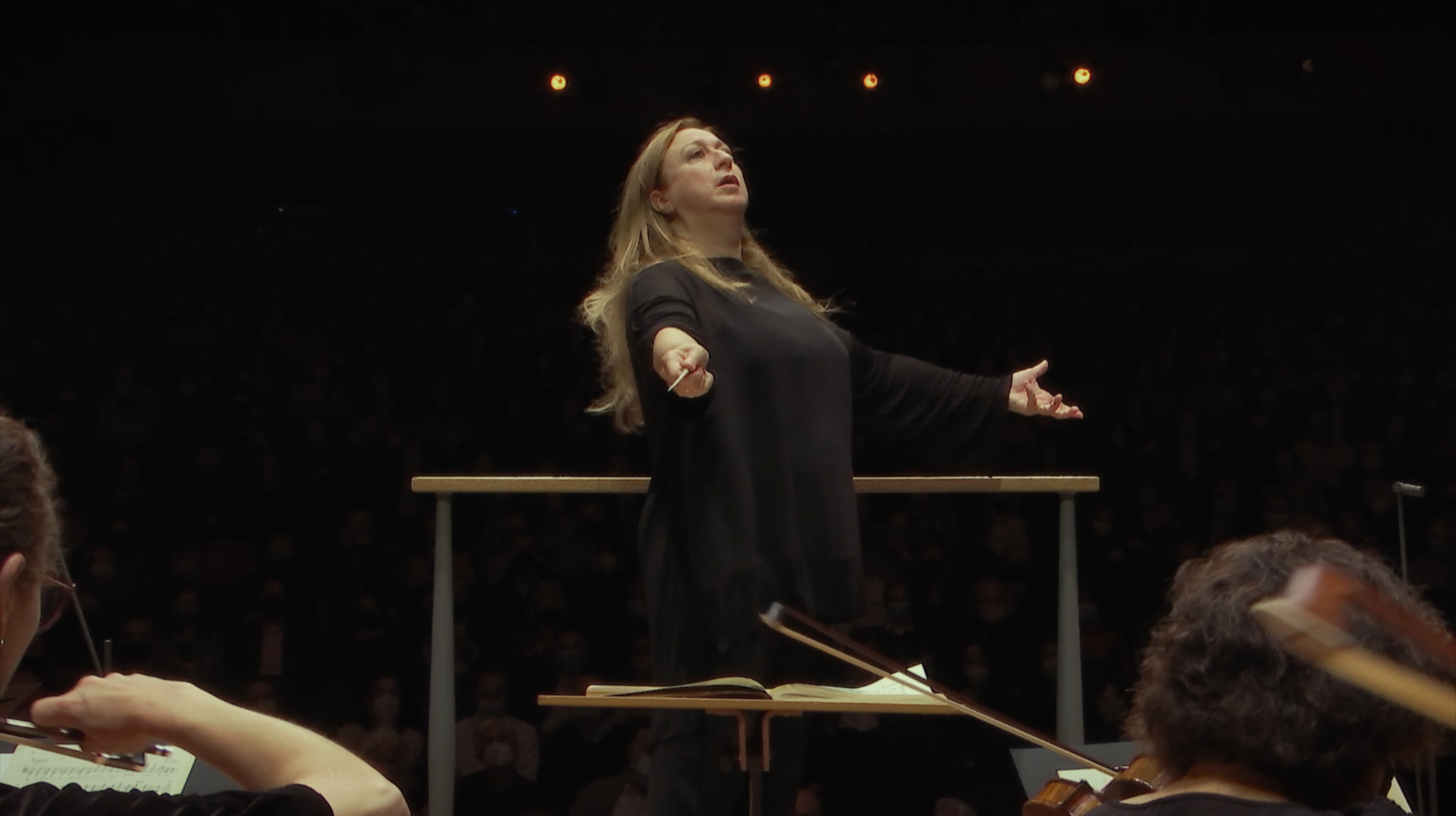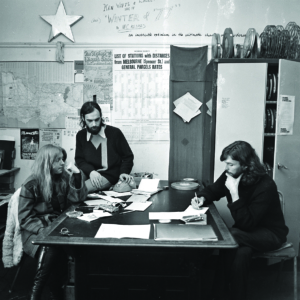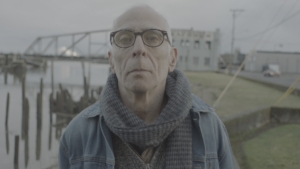When Australian conductor Simone Young was appointed Opera Australia’s resident conductor in 1986, she was the first woman to have ever held the position.[1]Michael Bailey, ‘Meet the Sydney Symphony’s New Conductor’, The Australian Financial Review, 14 December 2019, https://www.afr.com/life-and-luxury/arts-and-culture/meet-the-sydney-symphony-s-new-conductor-20191211-p53j3g, accessed 31 January 2024. In 1993, she became the first woman to conduct the Vienna State Opera, and twelve years later she was the first woman to conduct the Vienna Philharmonic.[2]Luke Slattery, ‘My Vienna: Simone Young Lives and Breathes the City’s Musical Heritage’, Australian Financial Review, 21 November 2019, https://www.afr.com/life-and-luxury/arts-and-culture/my-vienna-simone-young-lives-and-breathes-the-city-s-musical-heritage-20191030-p535y7, accessed 31 January 2024. Today, Young holds the position of the Sydney Symphony Orchestra’s chief conductor – the first woman to do so.
Knowing the Score, Janine Hosking’s 2023 documentary on Young’s life and career, traces these milestones alongside what Young describes as ‘lots of struggles, lots of disappointments’, culminating in her triumphant 2022 return to conducting in Sydney after a very public dismissal from Opera Australia in 2003.[3]The news that Young would be removed from her post at the end of the following year was made public in September 2022, with the board’s reasoning being that ‘her vision for the company was not financially sustainable and could jeopardise Opera Australia’s long-term viability’. Bryce Hallett, ‘Don’t Stop the Music’, The Age, 10 October 2002, <https://www.theage.com.au/entertainment/art-and-design/dont-stop-the-music-says-sacked-maestro-20021010-gduobb.html>, accessed 31 January 2024. New and archival interviews with Young and key classical music figures make up most of the film, many of the latter taken from 1995 Four Corners episode ‘The Young One: A Portrait of the Conductor Simone Young’. In fact, Knowing the Score is that program’s self-proclaimed sequel;[4]See ‘Knowing the Score: Synopsis’, in Serendipity Productions, Knowing the Score press kit, 2023, p. 3. though, somewhat confusingly – for instance, when one interviewee refers to ‘this film’ in what is clearly archival footage – this is never explicit.
The interviews are broken up by footage of Young conducting through the years, and it’s here that Knowing the Score excels. We learn from the interviews that Young is faultlessly committed to her craft, but the idea is actualised when we see her unshakable assurance in front of dozens of world-class musicians in rehearsals and during performances. It is invigorating to watch, bolstered by the sheer power of the music she conducts. These scenes are thrilling, even – or perhaps especially – for a classical music novice like me.
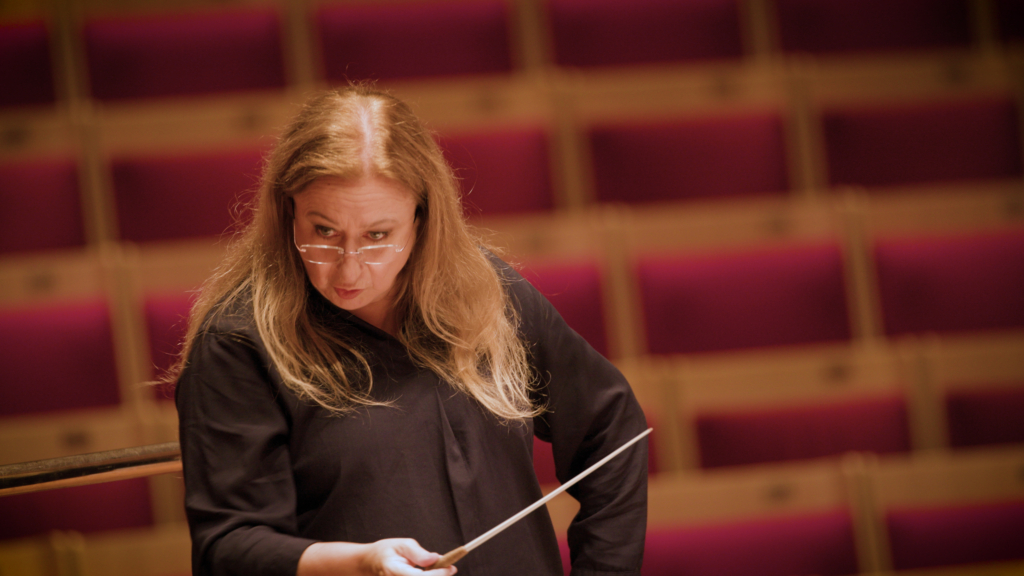
Skating the surface
Knowing the Score is structured to provide a solid overview of Young’s life, covering all major milestones and building to a gently triumphant finish. In this, the documentary certainly succeeds, but it also suffers from the limitations innate to chronological biographies, whereby depth is sacrificed for breadth.
The challenges of COVID shutdowns make a compelling final act, as the Sydney Opera House Concert Hall undergoes significant renovations; the opening night that follows this hiatus signals a resurrection of sorts for Young as well as for the arts more broadly. We get a glimpse of what’s at stake when an emotional Young reflects on the shutdowns – the only time in the film that her usually stoic facade wavers:
Being a musician […] defines who we are, and suddenly that was all ripped away. I found it quite devastating […] But then you put that into context; [there are] people who can’t sit next to their mother while they die in a hospital. Do we really matter?
It’s a question that echoed through the pandemic as artists across Australia found themselves robbed of their livelihoods. Art was deemed unnecessary by politicians who refused to fund it, even as it provided the locked-down with vital stimulation and connection.[5]Alison Pennington and Ben Eltham note that ‘the premature ending of JobKeeper in March 2021 […] conclude[d] a government approach to the arts that ha[d] been insufficient in guaranteeing its long-term stability and vitality’, despite the fact that, during the pandemic, ‘nearly three-quarters of Australians (73 per cent) sought out artistic and cultural goods to improve their mood and quality of life’. The Centre for Future Work at the Australia Institute, Creativity in Crisis: Rebooting Australia’s Arts and Entertainment Sector After COVID, July 2021, p. 5, <https://australiainstitute.org.au/wp-content/uploads/2021/07/Creativity_in_Crisis-_Rebooting_Australias_Arts___Entertainment_Sector_-_FINAL_-_26_July.pdf>, accessed 31 January 2024. When Young quips after the successful Opera House reopening, ‘What we do does matter,’ it feels too insubstantial an answer for such a significant question.

I felt similarly unsated when Knowing the Score touched on its subject’s family life. For Young, it was almost impossible to show up as both a world-class conductor and a mother. ‘I tried very hard for many years to […] have this crazy career and to have a family,’ she relates. ‘I ended up just being, I think, essentially sleep deprived for about twenty years.’ Interviews suggest that it was largely the support of her husband, Greg Condon, whose own career seems to have come second to Young’s, that enabled her to practice and flourish in her profession. It made me think of the countless women throughout history who have sacrificed their own ambitions for a creative-genius husband. What are the implications of this centuries-old gender norm being reversed? This is another fascinating question that remains unanswered as the film hurries to its next chapter.
Competing agendas
If there is an overriding theme that runs through the film, it is surely gender: from the many firsts she has achieved to the commentary of men in the industry that we hear in interview footage from over the years, the fact that Young is a woman is repeatedly remarked on. Young, however, has little to say on it. Though she acknowledges the impact of her gender in such a male-dominated industry (‘When I started, I faced considerable opposition,’ she explains), her exasperation about the topic dominates past and present interviews in the film: ‘What does being a woman have to do with conducting?’ she exclaims, and later dismisses the topic as ‘about as exciting as my shoe size’. Her disinterest in discussing it at all is established early in the film when she tells us,
I often get members of the audience come up and say to me, ‘How fantastic to see a woman up there.’ It means nothing to me. It really genuinely doesn’t mean anything to me. I’ve run out of interesting things to say about it.
It is startlingly clear that Young doesn’t want to be defined by her gender. And yet, Knowing the Score returns to it again and again.
Though Young acknowledges the impact of her gender in such a male-dominated industry, her exasperation about the topic dominates past and present interviews in the film.
Within the film, the contradiction is stark. It’s not an enviable position for the filmmakers to have their subject reject the topic that objectively makes her career so remarkable. Faced with this dilemma, one option might have been to respect her frustration and find another angle. Another could have been to face it head-on and overtly grapple with the question of whether gender should matter. Curiously, Knowing the Score takes neither path, choosing instead to let both assertions exist in awkward parallel without attempting to reconcile them. The result isn’t terrible – it certainly prompts questions around the issue – but there is a marked lack of conviction in the film that renders it somewhat unsatisfying. The text over the final credits explains that Young’s greatest achievement is conquering a Russian knitting pattern – a light, quirky postscript, sure, but one that is at odds with the melange of deeply serious topics the film has touched on.

In the Shadow of Tár
It’s difficult to watch Knowing the Score without considering the other notable recent film about a woman conductor, not least because they both involve Cate Blanchett. Todd Field’s Tár (2022) sees Blanchett starring as the eponymous (fictional) conductor, and she is credited as executive producer on both films. But the connection is deeper when the character of Lydia Tár is considered next to Young: two headstrong Western women who, in their work as conductors, are breaking down global gender barriers within classical music. Both women are mothers (though Lydia refers to herself as ‘father’), enjoy great success in Germany, and in their respective films are working towards a career-defining Gustav Mahler performance.
There are also key differences. In what has become the focus of much discussion and some controversy, Lydia is revealed as an egomaniac who chronically abuses her power. Field uses the character to explore ideas around identity politics and so-called cancel culture, as Lydia’s arrogant conviction that art cannot be conflated with its maker falls apart when she is outed as a sexual predator. For elite conductor Marin Alsop, who points out that many aspects of the character align with her personal life, Lydia is too close for comfort: ‘Once I saw [Tár …] I was offended. I was offended as a woman, I was offended as a conductor, I was offended as a lesbian.’[6]Marin Alsop, quoted in Christi Carras, ‘This Real-life Conductor Is Mentioned in Tár. And She’s Not a Fan of the Film’, Los Angeles Times, 11 January 2023, <https://www.latimes.com/entertainment-arts/movies/story/2023-01-11/marin-alsop-tar-cate-blanchett-conductor-statement-interview>, accessed 31 January 2024.
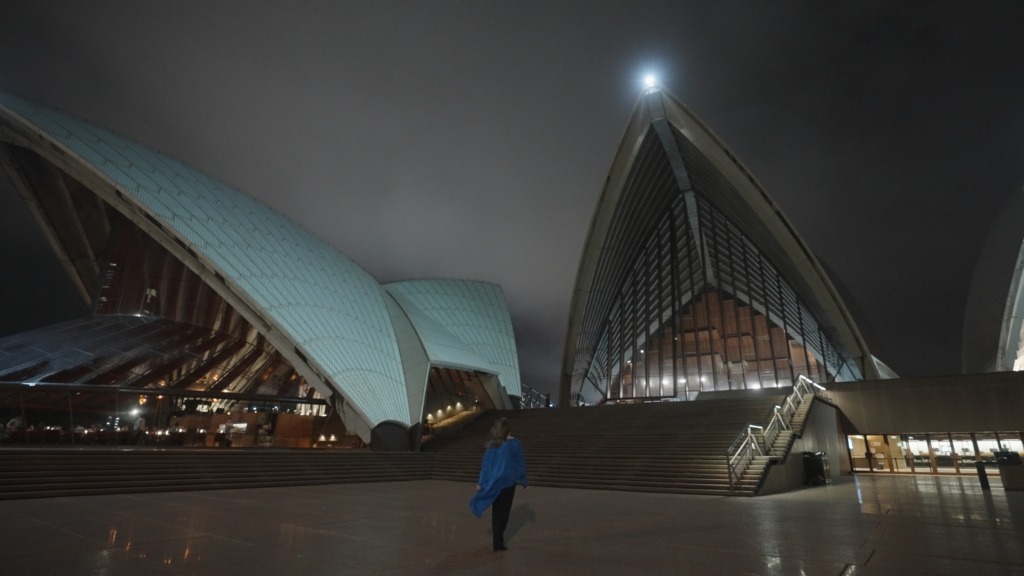
The question of how justifiably controversial it may be to depict a woman as a predator is less interesting to me than the fact that, at every point, the filmmakers have tried to dismiss the relevance of gender. They have done so in the press, with Blanchett claiming that she doesn’t ‘think about the character’s gender nor her sexuality at all’.[7]Cate Blanchett, quoted in Manori Ravindran, ‘Cate Blanchett Says Tár Has “Lots of Hot-button Topics” but She’s “Not Interested in Agitprop,” Director Todd Field Says He Made Film for Actor’, Variety, 1 September 2022, <https://variety.com/2022/film/global/cate-blanchett-metoo-tar-todd-field-venice-1235356715/>, accessed 31 January 2024. They do so in the film by coding Lydia as traditionally masculine, with tailored suits; a ‘father’ moniker; a subservient wife; a calculated and recurrent manipulation of young, attractive women in subordinate positions; and a creative-genius sensibility that is synonymous with so many famous male artists. That the film would make perfect sense if Lydia were a man adds credence to Blanchett’s claim that it’s ‘a very human portrait’;[8]ibid. Emphasis added. though Field wrote the film for Blanchett,[9]Ravindran, ibid. you would be forgiven for thinking he wrote it with a man in mind and then just happened to cast a woman. And finally, just like Young, Lydia explicitly rejects the gender distinction. In Tár’s opening scene, in which Lydia is being interviewed on stage, the character ridicules the use of the word maestra, recalling Young’s stern words in Knowing the Score: ‘If you want to use a title, the title is “maestro”. It is not “maestra”.’
Hard conversations
Why are Young, Blanchett and Blanchett’s character in Tár so determined to remove gender from the conversation? It’s particularly curious when you consider the deeply sobering statistics. As recently as two years ago, Alsop was the only woman to have ever held the head position of a top-tier American orchestra.[10]Javier C Hernández, ‘Top Orchestras Have No Female Conductors. Is Change Coming?’, The New York Times, 10 September 2021, <https://www.nytimes.com/2021/09/10/arts/music/female-conductors.html>, accessed 31 January 2024. In 2020, fewer than 6 per cent of leading major European orchestras were women.[11]Eleanor Beardsley, ‘Women Conductors Are the Rule, Not the Exception, at a New Classical Event’, NPR, 2 October 2020, <https://www.npr.org/sections/deceptivecadence/2020/10/02/919550409/women-conductors-are-the-rule-not-the-exception-at-a-new-classical-event>, accessed 31 January 2024. In Australia, women only made up 20 per cent of conductors over the 2021 and 2022 seasons – a comparatively large portion, bolstered by Young’s own contributions.[12]Kate Milligan, ‘Tár: Fantasy or Stark Reality for Women Conductors?’, Limelight, 26 January 2023, <https://limelightmagazine.com.au/features/tar-fantasy-or-stark-reality-for-women-conductors/>, accessed 31 January 2024. The Vienna Philharmonic didn’t even allow women to audition as players until 1997, as Knowing the Score points out, and the Vienna State Opera didn’t stage an opera composed by a woman until 2019.[13]Rosie Pentreath, ‘Why Has Vienna Opera Only Just Staged an Opera by a Female Composer?’, Classic FM, 10 December 2019, <https://www.classicfm.com/discover-music/periods-genres/opera/why-vienna-first-female-orlando-now/>, accessed 31 January 2024. According to a Guardian article, a 2022 UK study ‘showed that 87% of women working in the orchestral sector reported experiencing discrimination, with 68% describing incidents of sexual harassment’.[14]Hugh Morris, ‘Harassment, Hierarchies and Discreetly Rubbed Trousers: The Exhausting Politics of Orchestras’, The Guardian, 1 March 2023, <https://www.theguardian.com/music/2023/mar/01/tar-conductor-orchestra-harassment>, accessed 31 January 2024. I could go on.
It’s clear that Young is fed up with the conversation, and perhaps the same is true for Blanchett (and Lydia): they simply want to create great art, separate from any identity politics. Young believes that to do otherwise harms the art, reasoning that the focus on gender can ‘work negatively to the point where you are then simply put together in a pigeonhole with all your other female colleagues’.[15]Simone Young, in ‘Simone Young Knows the Score’, The Drawing Room, ABC Radio National, 3 February 2023, available at <https://www.abc.net.au/radionational/programs/drawingroom/simone-young-knows-the-score/101928782>, accessed 31 January 2024. It’s a valid point, but unfortunately it’s not that simple. As history has shown us, gains for marginalised groups are hard-won; ignoring the problem rarely leads to progress, and risks reinforcing the status quo.
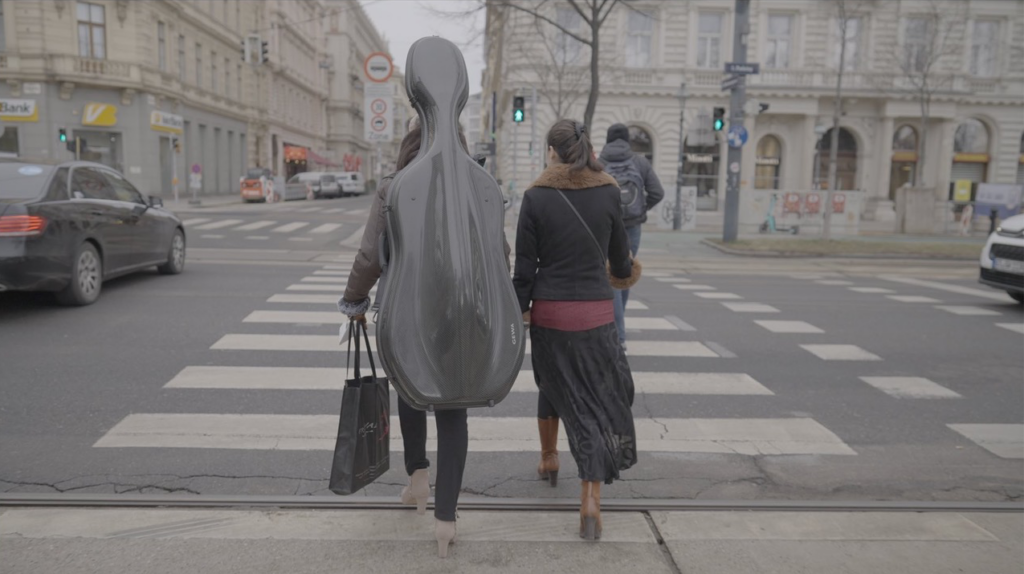
There are hints that such a dynamic is at play here. Knowing the Score shows footage from 1994 of veteran conductor Daniel Barenboim talking about hiring Young as his assistant:
Whenever I have seen female conductors, […] either they try to conduct in a false masculine way […] or else they didn’t even try that and had a very effeminate nature, and that didn’t work at all. [With Young] I was stunned because [it was] the first time – and I must say, until now, the only time – that I have seen a woman conductor who completely asexualises her gestures.
In more recent footage, Young explains that she took Barenboim’s remarks as ‘a huge compliment because it just dropped the “woman” out of the expression “woman conductor”’. While doing press for the documentary, she claimed that she has ‘far more in common with my male colleagues of my generation than I do with my female colleagues who are twenty years younger’.[16]ibid. This may be true, but the statement also carries echoes of the ‘pick me’ mentality, in which women take pains to align themselves with men by disparaging or distancing themselves from other members of their gender.[17]A piece unpacking the concept in its recent iteration as a TikTok trend cites an ‘“I get along better with guys” energy’ as a common trait, explaining that ‘videos online share that you can spot a “pick me girl” if they’re someone that puts other girls down, especially when in a group setting with a lot of men’. Courtney Young, ‘Why TikTok Is Flooded with Controversial Videos About “Pick Me Girls”’, Bustle, updated 23 September 2022, <https://www.bustle.com/life/what-is-a-pick-me-girl-definition-traits>, accessed 1 April 2023.
In a realm as statistically hostile to women as classical music, has it ever been possible to succeed without to some extent rejecting one’s femininity? Barenboim’s statement makes the answer clear, for Young at least: it’s a man’s world, and conformity is the only option.
Young’s own comments about Tár are most telling here. When discussing the film’s controversy, she points out that the discourse around it is neglecting what is, for her, a crucial question – whether Lydia ‘had to become, or be, the way she is in order to achieve her position at the top of the profession’.[18]Young, op. cit. The same can be asked of Young: in a realm as statistically hostile to women as classical music, has it ever been possible to succeed without to some extent rejecting one’s femininity? Barenboim’s statement makes the answer clear, for Young at least: it’s a man’s world, and conformity is the only option.
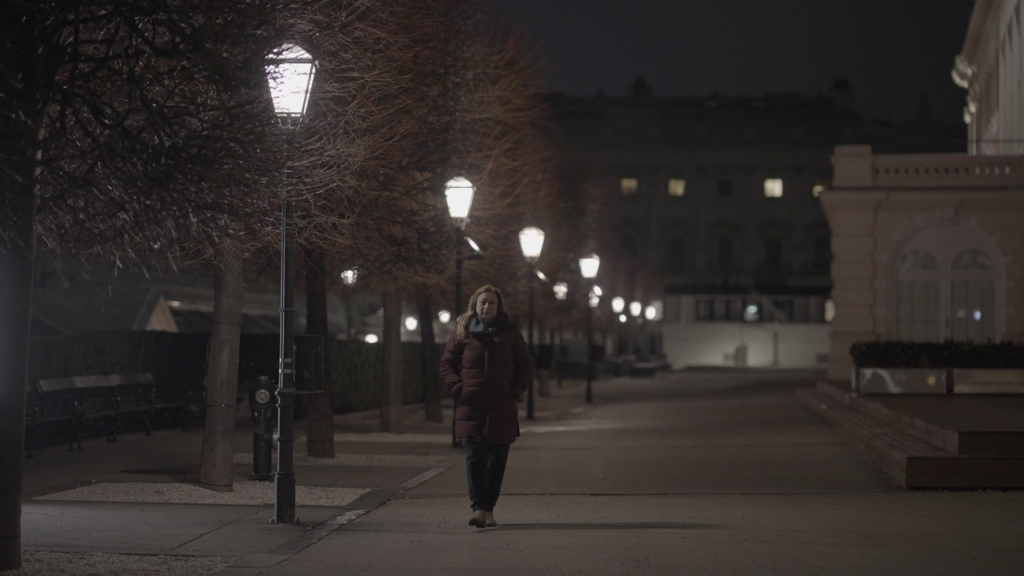
None of this is a criticism of Young. Her devotion to succeeding is a direct reflection of her obvious devotion to music, which is made no less remarkable by the fact that she clearly had a strict set of rules to play by. But it points to a deeper systemic issue in her field that can’t be solved by the achievements of a select few, no matter how impressive. This is why, despite being an interesting, engaging film, Knowing the Score ultimately falls short of its potential. Its neat conclusion, which sees a return to narrative equilibrium with the COVID lockdowns over and Young once more conducting in Australia, proves only superficially satisfying; the underlying problems making it so hard for women to succeed in her profession remain. Rather than telling Young’s story and that of the broader challenges of women in classical music in a coherent manner, the discordant gap between its subject’s aggressive rejection of the gender issue and the documentary’s unavoidable focus on it can only provoke a lingering unease.
Endnotes
| 1 | Michael Bailey, ‘Meet the Sydney Symphony’s New Conductor’, The Australian Financial Review, 14 December 2019, https://www.afr.com/life-and-luxury/arts-and-culture/meet-the-sydney-symphony-s-new-conductor-20191211-p53j3g, accessed 31 January 2024. |
|---|---|
| 2 | Luke Slattery, ‘My Vienna: Simone Young Lives and Breathes the City’s Musical Heritage’, Australian Financial Review, 21 November 2019, https://www.afr.com/life-and-luxury/arts-and-culture/my-vienna-simone-young-lives-and-breathes-the-city-s-musical-heritage-20191030-p535y7, accessed 31 January 2024. |
| 3 | The news that Young would be removed from her post at the end of the following year was made public in September 2022, with the board’s reasoning being that ‘her vision for the company was not financially sustainable and could jeopardise Opera Australia’s long-term viability’. Bryce Hallett, ‘Don’t Stop the Music’, The Age, 10 October 2002, <https://www.theage.com.au/entertainment/art-and-design/dont-stop-the-music-says-sacked-maestro-20021010-gduobb.html>, accessed 31 January 2024. |
| 4 | See ‘Knowing the Score: Synopsis’, in Serendipity Productions, Knowing the Score press kit, 2023, p. 3. |
| 5 | Alison Pennington and Ben Eltham note that ‘the premature ending of JobKeeper in March 2021 […] conclude[d] a government approach to the arts that ha[d] been insufficient in guaranteeing its long-term stability and vitality’, despite the fact that, during the pandemic, ‘nearly three-quarters of Australians (73 per cent) sought out artistic and cultural goods to improve their mood and quality of life’. The Centre for Future Work at the Australia Institute, Creativity in Crisis: Rebooting Australia’s Arts and Entertainment Sector After COVID, July 2021, p. 5, <https://australiainstitute.org.au/wp-content/uploads/2021/07/Creativity_in_Crisis-_Rebooting_Australias_Arts___Entertainment_Sector_-_FINAL_-_26_July.pdf>, accessed 31 January 2024. |
| 6 | Marin Alsop, quoted in Christi Carras, ‘This Real-life Conductor Is Mentioned in Tár. And She’s Not a Fan of the Film’, Los Angeles Times, 11 January 2023, <https://www.latimes.com/entertainment-arts/movies/story/2023-01-11/marin-alsop-tar-cate-blanchett-conductor-statement-interview>, accessed 31 January 2024. |
| 7 | Cate Blanchett, quoted in Manori Ravindran, ‘Cate Blanchett Says Tár Has “Lots of Hot-button Topics” but She’s “Not Interested in Agitprop,” Director Todd Field Says He Made Film for Actor’, Variety, 1 September 2022, <https://variety.com/2022/film/global/cate-blanchett-metoo-tar-todd-field-venice-1235356715/>, accessed 31 January 2024. |
| 8 | ibid. Emphasis added. |
| 9 | Ravindran, ibid. |
| 10 | Javier C Hernández, ‘Top Orchestras Have No Female Conductors. Is Change Coming?’, The New York Times, 10 September 2021, <https://www.nytimes.com/2021/09/10/arts/music/female-conductors.html>, accessed 31 January 2024. |
| 11 | Eleanor Beardsley, ‘Women Conductors Are the Rule, Not the Exception, at a New Classical Event’, NPR, 2 October 2020, <https://www.npr.org/sections/deceptivecadence/2020/10/02/919550409/women-conductors-are-the-rule-not-the-exception-at-a-new-classical-event>, accessed 31 January 2024. |
| 12 | Kate Milligan, ‘Tár: Fantasy or Stark Reality for Women Conductors?’, Limelight, 26 January 2023, <https://limelightmagazine.com.au/features/tar-fantasy-or-stark-reality-for-women-conductors/>, accessed 31 January 2024. |
| 13 | Rosie Pentreath, ‘Why Has Vienna Opera Only Just Staged an Opera by a Female Composer?’, Classic FM, 10 December 2019, <https://www.classicfm.com/discover-music/periods-genres/opera/why-vienna-first-female-orlando-now/>, accessed 31 January 2024. |
| 14 | Hugh Morris, ‘Harassment, Hierarchies and Discreetly Rubbed Trousers: The Exhausting Politics of Orchestras’, The Guardian, 1 March 2023, <https://www.theguardian.com/music/2023/mar/01/tar-conductor-orchestra-harassment>, accessed 31 January 2024. |
| 15 | Simone Young, in ‘Simone Young Knows the Score’, The Drawing Room, ABC Radio National, 3 February 2023, available at <https://www.abc.net.au/radionational/programs/drawingroom/simone-young-knows-the-score/101928782>, accessed 31 January 2024. |
| 16 | ibid. |
| 17 | A piece unpacking the concept in its recent iteration as a TikTok trend cites an ‘“I get along better with guys” energy’ as a common trait, explaining that ‘videos online share that you can spot a “pick me girl” if they’re someone that puts other girls down, especially when in a group setting with a lot of men’. Courtney Young, ‘Why TikTok Is Flooded with Controversial Videos About “Pick Me Girls”’, Bustle, updated 23 September 2022, <https://www.bustle.com/life/what-is-a-pick-me-girl-definition-traits>, accessed 1 April 2023. |
| 18 | Young, op. cit. |
